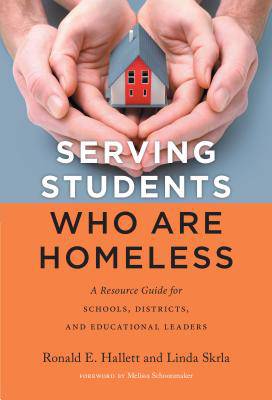
- Afhalen na 1 uur in een winkel met voorraad
- Gratis thuislevering in België
- Ruim aanbod met 7 miljoen producten
- Afhalen na 1 uur in een winkel met voorraad
- Gratis thuislevering in België
- Ruim aanbod met 7 miljoen producten
Serving Students Who Are Homeless
A Resource Guide for Schools, Districts, and Educational Leaders
Ronald E Hallett, Linda SkrlaOmschrijving
"Students who are homeless want to be engaged in the educational system; however, the trauma their circumstances produce and the resulting shame limit their ability to do so. Often, they get labeled as disruptive or truant. Though their external behaviors may appear to justify such identifiers, digging a bit deeper into their lived experiences often highlights traumatic incidents that warrant consideration...Teachers, social workers, psychologists, counselors, office staff, homeless liaisons, educational advocates, community partners, and administrators at the site, district, and state levels all play critical roles in creating educational spaces that encourage success for these students."
--Excerpt from the Introduction to Serving Students Who Are Homeless
Schools and districts are seeing unprecedented numbers of students and families living without residential stability. Although the McKinney-Vento Act has been around for over 2 decades, many district- and site-level practitioners have a difficult time interpreting and implementing the Act's mandates within their local contexts.
This book provides much-needed guidance to help educator and support staff support students who are homeless and highly mobile students who face significant barriers related to access and academic success. The authors employ several different strategies to help translate complex state and federal policies into effective practices. They include policy analysis, examples of successful approaches, tools for training staff, youth experiences, and address the role school districts play in serving marginalized students.
Serving Students Who Are Homeless can be used as a professional development tool at the local and district level, and as a textbook in higher education settings that prepare entry-level and advanced-credential administrators, counselors, school psychologists, and curriculum leaders.
Book Features:
- Guidance for understanding and implementing the law and tools for training staff.
- Case studies that include the voices of students, families, and practitioners.
- Questions and activities to facilitate professional development discussions.
Specificaties
Betrokkenen
- Auteur(s):
- Uitgeverij:
Inhoud
- Aantal bladzijden:
- 160
- Taal:
- Engels
Eigenschappen
- Productcode (EAN):
- 9780807758021
- Verschijningsdatum:
- 16/03/2017
- Uitvoering:
- Paperback
- Formaat:
- Trade paperback (VS)
- Afmetingen:
- 152 mm x 226 mm
- Gewicht:
- 249 g

Alleen bij Standaard Boekhandel
Beoordelingen
We publiceren alleen reviews die voldoen aan de voorwaarden voor reviews. Bekijk onze voorwaarden voor reviews.












